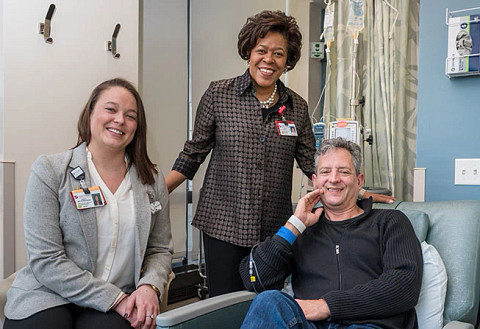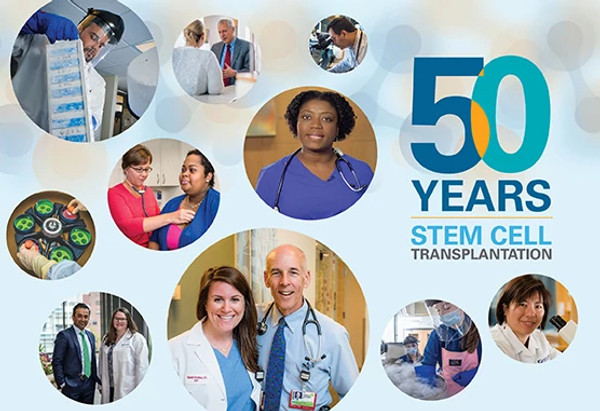
What is a stem cell/bone marrow transplant?
Stem cell/bone marrow transplant offers some patients with benign and hematologic diseases the possibility of a cure, and others a longer period of disease-free survival. Stem cells are the "building blocks" of bone marrow and blood formation. They form white blood cells (which fight infections), red blood cells (which carry oxygen throughout the body), and platelets (which allow blood to clot, helping wounds heal) — all the components your immune system needs to function.
During a transplant, healthy [hematopoietic] stem cells are transplanted from one individual to another or using an individual's own stem cells to grow and produce all of the different parts of the blood that both your body and your immune system need. You may hear the procedure referred to as a bone marrow transplant (BMT), or a peripheral blood stem cell transplant (PBSCT), or an umbilical cord blood transplantation (UCBT), depending on the source of the stem cells that are used.
When is a stem cell/bone marrow transplant needed?
You may need a stem cell/bone marrow transplant when:
- Your body cannot make the blood cells it needs because your bone marrow or stem cells have failed.
- Your bone marrow or blood cells have become diseased and need to be replaced.
- You have a disease that is treated with high doses of chemotherapy and/or radiation treatment, which destroys both cancerous and stem cells at the same time.
